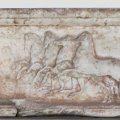A novel quantum theory developed by University of Queensland researchers has been confirmed by recent experiments at a Nobel Prize-winning lab.
Professor Bill Phillips’ Nobel Prize-winning group at the US National Institute of Standards and Technology (NIST), has published an experimental confirmation of a theoretical prediction by Dr Karen Kheruntsyan and Professor Peter Drummond from the UQ node of the ARC Centre of Excellence for Quantum-Atom Optics.
The recent theoretical work carried out by the UQ physicists, in collaboration with their colleagues at Ecole Normale Superiere of France (ENS), was the first calculation of spatial pair correlations of an ultra-cold gas of atoms in one dimension.
Although these systems were first modelled in the 1960s, no exact pair correlations have been calculated in 40 years. Usually the treatment of quantum many-particle systems require supercomputers to obtain any solution.
Instead, the rigorous and exact theory employed by the theoretical team from UQ and France used a simple combination of mathematical ideas without supercomputers
The UQ theory was first published in August last year in the prestigious USA journal, the Physical Review Letters, which also recently published the NIST results.
The theory, in layman’s terms, is if a gas of a certain type of atoms is confined to a spherical container and cooled to a very low temperature all the atoms can suddenly enter into a recently discovered state of matter called a Bose-Einstein condensate.
In this state, all the atoms behave as waves and “sing in unison” like a laser beam.
In contrast to this situation, if the motion of atoms is confined to a one-dimensional line, the gas surprisingly shows richer behaviour than in a three-dimensional sphere.
Not only can the gas show laser-like behaviour, but also the atoms can try to either bunch together or to completely avoid each other, depending on the density and temperature.
As all particles in nature are either bosons or fermions, this last case demonstrates a unique and fascinating situation where one type of fundamental particle, the boson, can behave like its counterpart, the fermion.
Possible applications of the research are the development of atom lasers, high-precision interferometry and “atom-chip” devices.
Media: For further information contact Dr Karen Kheruntsyan, (telephone +61 7 3365 3420, email kherunts@physics.uq.edu.au) or Professor Peter Drummond (telephone +61 7 3365 3404, email drummond@physics.uq.edu.au) or Diane Hutton (telephone +61 7 3365 3427, email diane@physics.uq.edu.au) from the ARC Centre of Excellence for Quantum-Atom Optics.
.jpg)



